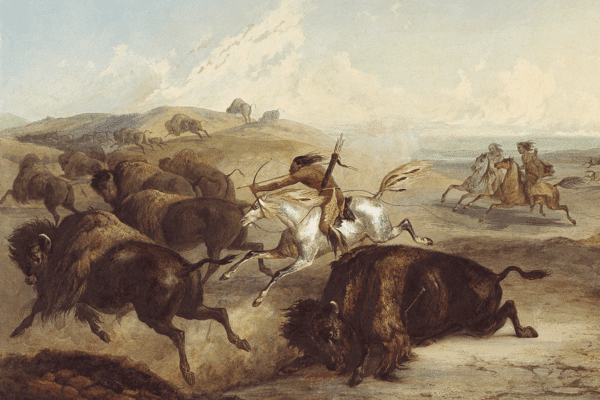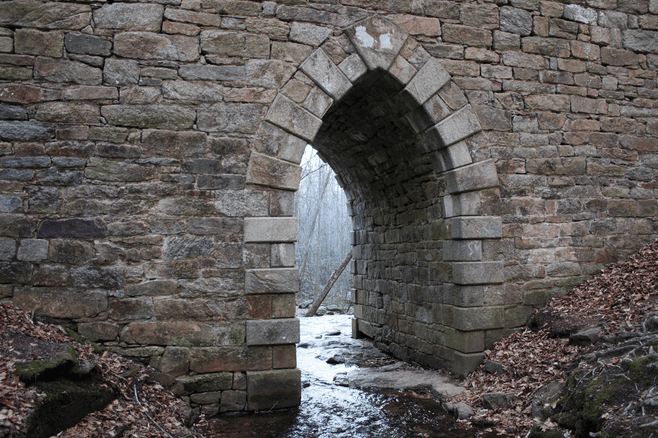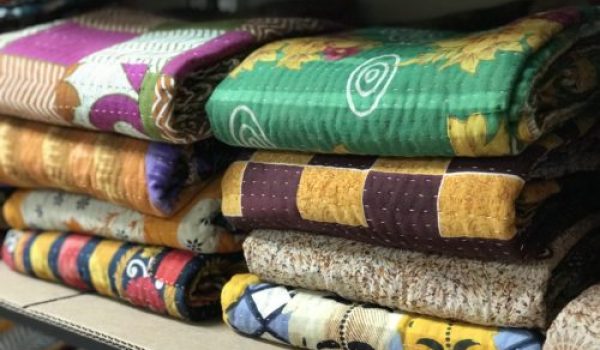Strange things happen at Poinsett Bridge in Travelers Rest, S.C., once dark settles in. Do you want an explanation? Then take your pick from these popular ghost stories.
We cannot quite say when folklore began to surmount about the odd, seemingly unexplainable happenings of Poinsett Bridge come nightfall. But we know that many explain the happenings with haunted tales that date back to even before the time of the bridge’s construction, far back in its history.
These are the most popular ghost stories that aim to make sense of the lights, sounds, and shapes that define the experience of those brave enough to visit Poinsett Bridge after daylight:
Old Indian Burial Ground
According to local folklore, Poinsett Bridge was built on the site of an old Indian burial ground dating back to when Cherokees were the only inhabitants of the mountains of the Carolinas, Georgia, and Tennessee.
Perhaps the strange happenings that go on at night come from the unrest of Indian souls that were quite literally trampled underfoot of the white man as he took control of the land in the late 1700s and early 1800s and subsequently began building the State Road over one of the natives’ sacred sites.
“As the legend states, an Indian burial mound was located nearby the site of the bridge and was destroyed in order to build the bridge,” writes Talmadge Johnson in Ghosts of the South Carolina Upcountry.
Whether or not an Indian burial ground lies beneath Poinsett Bridge or not, we do know for sure that the Cherokee people did use the land in northern Greenville County and, specifically, the area of Poinsett Bridge before anyone else.
“In South Carolina, the Cherokee Lower Towns were situated west of what is now Greenville County, in modern Oconee and Pickens counties. The area of Greenville County was part of the Cherokee hunting grounds, which extended east to the Broad River,” according to “Poinsett Bridge: A Historic Context and Archaeological Survey.”

But, interestingly, the Cherokee buried their dead, more often than not, indoors or near the home, not in a large plot all together and out of the way:
“In each town there was a priest whose task it was to bury the dead. He came soon after death to the house where the corpse was and usually buried it either in the floor directly under the place where the person had died, under the hearth, outside near the house, or in the case of a distinguished chief, under the seat he had occupied in the town council house,” writes Thomas Mails in his book The Cherokee People.
It seems unlikely, then, that the Cherokee would have buried their dead in northern Greenville among their hunting grounds and away from the towns where they resided.
Those buried outdoors would be, however, lodged between a large rock and a wall built opposite the rock. For a roof, the Cherokee would add an arch of wood or stone to cover over the tomb.
This makes for an interesting aside, since if Poinsett Bridge was built over an Indian burial ground, its structure followed closely, at least, to the Cherokees’ own burial traditions.
Bridge Workers Put Inside
Other stories go that some of the men who worked to build Poinsett Bridge died during the bridge’s construction due to a variety of illnesses, one of which was malaria.
These men were then supposedly buried under and even within the bridge itself, perhaps to save time or to memorialize those who had died while hard at work.
“As some of the workers passed away as the bridge was being completed, the bodies were buried within the structure itself,” says Blue Ridge resident Michael Morgan.
The historical record does support that many of the work crew fell sick with malaria even before they arrived in the mountains.
“Many of the men that came up from having worked on the canals down on the coast had malaria, and they brought it with them and other people got it from them,” says local historian Dean Campbell.
But even those untouched by malaria caught flus and colds and other less severe sicknesses.
“During the first three to four weeks of work on the Saluda Mountain Road, 40 to 50 laborers, mostly ‘mechanics,’ were in the hospital,” according to the bridge’s archaeological survey.
Rises in the river and unexpected flooding contributed to overall delays in the bridge’s completion. Other locals maintain that a number of men were killed by these high waters.
“From what I understand, there was a great flash flood during the building of the bridge, and some men were killed by the suddenness of the wall of water,” says local historian Marian Cooper Bryan. “Others may have died from accidents as the construction went on.”
It is, perhaps, plausible that at least some of the work crew died from sickness or natural disaster during the course of the nearly four-month-long project of building Poinsett Bridge. But whether or not any were buried within the bridge remains open to conjecture.
A Mistreated Slave
Finally, another source of speculation includes a supposed slave killing at or near Poinsett Bridge.
“According to one legend, a slave was once hung under Poinsett Bridge and his ghost still haunts it,” says Taylors resident Doris Davis.
This story includes the least amount of detail and, in fact, several different versions. One version states that a female slave was hung from Poinsett Bridge. Another goes that a slave was beheaded near the bridge by an unkind master.
In the YouTube short “Haunted Echoes: The Dark Corner,” local historian Dean Campbell shares a bit about these two versions of the tale and also goes into detail about the supposed haunting at the nearby Gosnell cabin, which has now been relocated.
Still another version of the slave haunting seems to merge aspects of the work crew haunting.
“The bridge is haunted by those who helped build it but got none of [Joel] Poinsett’s glory. The ghosts of the slaves who died during construction sometimes reappear as lights in the surrounding woods and on the bridge itself after dusk and hover in mid air for a few seconds and then vanish,” writes Johnson.
Sources disagree on whether slave labor was involved at all in the construction of what is today South Carolina’s oldest surviving bridge. Some say Native American and Asian slaves were put to work, while others maintain that neither were involved.
In general, there doesn’t appear to be enough concrete evidence about the slave haunting at Poinsett Bridge to even provide a consistent version of this particular ghost story.
The Verdict
So the question remains: Is Poinsett Bridge haunted?
“It’s just like the game of gossip. You start the story and by the time you tell it to three dozen people, the story changes,” Campbell says to explain the haunted tales that have proliferated about Poinsett Bridge.
But others seem convinced that what they’ve seen, heard, experienced at Poinsett Bridge can only be explained by a paranormal presence.
“Based on the EMF activity, noises heard, sightings of figures by separate people, photographs, and personal experiences — all of which we have no explanation for — I would say [the Poinsett Bridge] site has definite paranormal activity,” says Tina McSwain, founder of the Charlotte Area Paranormal Society.
Maybe the only way to know for sure is to pay the old bridge a visit and decide for yourself.
“Go there and tell me it’s not [haunted]! I dare you,” says Marietta resident Shanna Clippard.
Image Credits: Featured / campfire – Flickr user Kooikkarri; Indian hunting bison – Public domain
Sources
Ghosts of the South Carolina Upcountry by Talmadge Johnson
“Haunted Echoes: The Dark Corner” by Robb Baker
“Poinsett Bridge” by Tina R. McSwain / Charlotte Area Paranormal Society
“Poinsett Bridge: A Historic Context and Archaeological Survey”
The Cherokee People: The Story of the Cherokees from Earliest Origins to Contemporary Times by Thomas E. Mails




